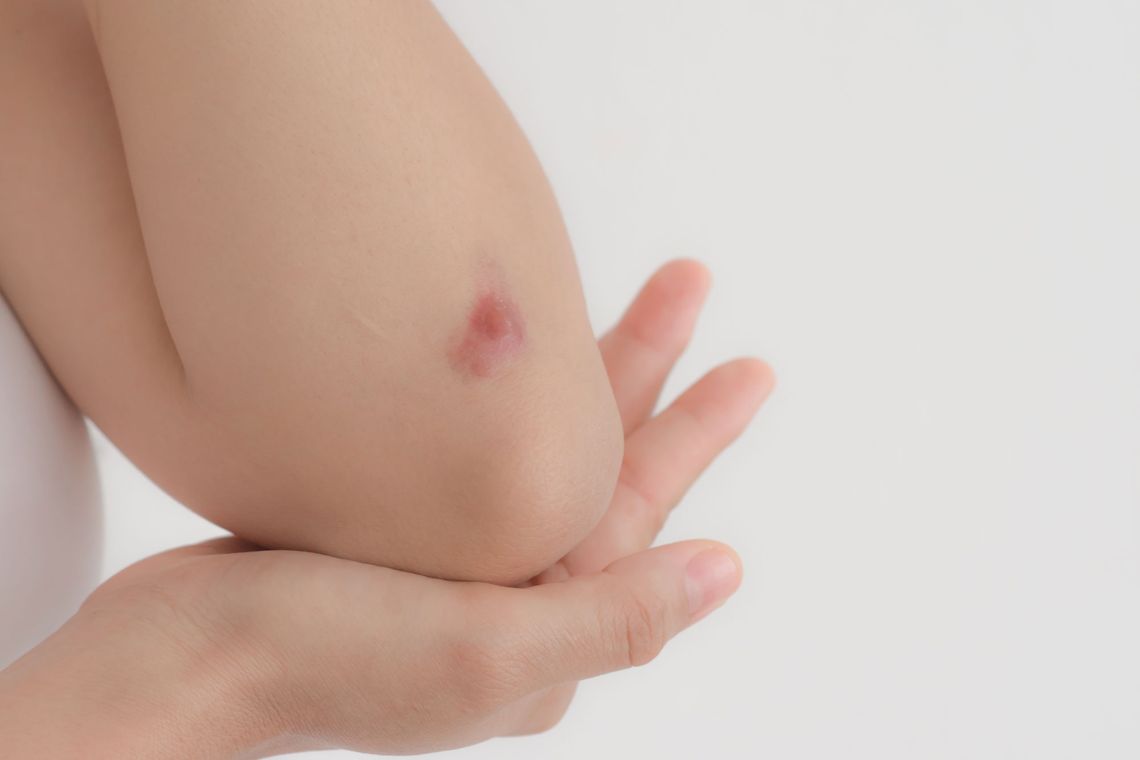What was it like setting a wound for the first time?
With the razor, it wasn't that spectacular I have to say, because you don't really see the wound until a few days later. In general, it was something new for me, I do not come from the medical field, but I find the wound setting not as bad as others might. Brushing is a bit worse because it bleeds and you really have to be careful not to brush too long so that you don't hurt the subjects. But it's important to brush long enough, because if you stop once and realize it's not enough, you can't really start over, because then it hurts.
Did you practice this before?
As for the suction blister model, we "practice" directly on volunteers under the guidance of a very experienced colleague, because it is a very time-consuming process of 3-6 hours.
For whom is it worse - for you or the subject?
It tends to be worse for the subjects, especially if they don't know the procedure. It helps if they look away while brushing. Later, when they realize that it doesn't hurt, they also tend to take an interest and watch. With the suction blister model, I always told them beforehand that it wouldn't hurt because we were only taking off the epidermis. When I noticed that they were a bit scared because of the syringe and the scissors, I tried to calm them down and recommended that they rather look away... Our models really don't hurt; it's more a head thing.
What about those who have already been through it? Do the volunteers ever come back after such a procedure?
Yes, definitely, they like to come back, even though it is the most exhausting for the test person, as they have to sit on the device for up to 6 hours, depending on how quickly a blister forms. They are allowed to eat and drink during that time, but not to go to the toilet. But it is the least painful wound model!
And on the performing side as a study technician, do you enjoy setting wounds?
Enjoy it?!, So if I say yes there now, it sounds like I'm a psychopath (laughs). But compared to other examinations we do at proderm, the job is more challenging and interesting - especially the suction blister. Overall, I enjoy the work and I don't have any fear or disgust about setting wounds.
On the topic of challenge, what is the most challenging part of doing wound models in general?
(Thinks about it) Hmm..., the biggest challenge is actually to get the uniformity of the wound that is needed for the model and the skin is a little different for everyone, especially with the abrasion model. It is not so easy! With the razor burn model, for example, it is totally important to exert enough force, and in the beginning you don't really dare, but with a little practice you will quickly become more confident. For me personally, the biggest challenge in the suction blister model was overcoming the fear of missing the mark or sticking the needle in too far when emptying the suction blister... In the beginning, I always continuously guided the test subjects through the suction blister model.
If you had to pick a wound model to be performed on yourself, which one would you pick?
Well, I think most people experienced razor burn before, but when it comes to the others, I would definitely pick the suction blister model!
Thanks a lot !








